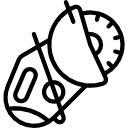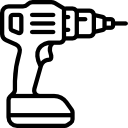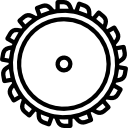- اتو لوله سبز
- اره پروفیل بر
- اره عمودبر (اره چکشی)
- اره فارسی بر
- اره گرد (اره دیسکی)
- اره مویی
- اره میزی
- اره نواری (گوشت بری)
- اره همه کاره (افقی بر)
- ابزار چندکاره
- بالابر برقی
- بتن ساب و موزایک ساب
- بکس برقی
- پیچگوشتی برقی
- پیستوله برقی
- بیسکویت زن
- چکش تخریب
- دمنده/مکنده (بلوور)
- دریل بتن کن
- دریل ساده (سرکج)
- دریل ستونی
- دریل ضربه ای/چکشی
- دریل مغناطیسی (مگنتی)
- دریل نمونه بردار (کرگیر)
- دستگاه جوش
- رنده و فرز نجاری
- سنباده برقی
- سشوار صنعتی
- سنگ دوطرفه (چرخ سنباده)
- سنگ و پولیش
- شیارزن و مرمربر
- فرز مینیاتوری
- فرز انگشتی
- میخکوب و منگنه کوب
- مینی سنگ
How Does the Foreign Exchange Market Work Exactly?
They earn their profits through spreads, which are the differences between the buying and selling prices of currency pairs. The foreign exchange market can be traced back to ancient civilizations, where exchanges entailed trading goods and currencies using metal coins valued based on weight. However, the first formal forex trading started in Amsterdam around the 17th century, enabling people to trade currencies to make exchange rates stable. This was followed by the introduction of the gold standard in the 19th century. The majority of the volume in currency trading is confined to only 18 currency pairs compared to the thousands of stocks that are available in the global equity markets.
- If consumer spending increases and demand grows to exceed supply, inflation may ensue, which is not necessarily a bad outcome.
- The foreign exchange market, commonly referred to as the forex or FX, is the global marketplace for the trading of one nation’s currency for another.
- Also, events in one country in a region may spur positive/negative interest in a neighboring country and, in the process, affect its currency.
- Your prediction is confirmed and you decide to convert your euros back into dollars.
Foreign currency exchange, also known as forex or FX, is the process of exchanging one currency for another at an agreed exchange rate. For example, if you are travelling from the United States to Europe, you would need to exchange your US dollars for euros. The foreign exchange market is where this exchange takes place, allowing businesses and individuals to transact with foreign currencies, which is essential for international trade and investment. The forex market, also known as the foreign exchange market, is the largest and most liquid financial market in the world. It operates 24 hours a day, five days a week, allowing traders to buy, sell, and exchange currencies. In this article, we will explore the basics of the forex market and shed light on its inner workings.
When you close a leveraged position, your profit or loss is based on the full size of the trade. Because every trade effectively involves a buyer and a seller, there is always a winner and a loser, and even the most experienced forex investors can — and do — lose. International companies may use the forex market to make sure it has the appropriate cash on hand. It may choose to exchange one denomination for another base on its operations, not necessarily for investment or speculation purposes. By shorting €100,000, the trader took in $115,000 for the short sale. When the euro fell, and the trader covered the short, it cost the trader only $110,000 to repurchase the currency.
It operates electronically as an over-the-counter market through a network of banks, financial institutions, and forex brokers. The first true forex market was in Amsterdam, approximately 500 years ago. The exchange allowed people to freely trade currencies to stabilize exchange rates. In 1875, the gold standard was implemented, meaning inside bar trading strategy countries were only allowed to print currency equal to the amount of their gold reserves. Gold was the metal of choice due to it being rare, malleable, tough to corrode, and hard to obtain. One of the most unique features of the forex market is that it’s made up of a global network of financial centers that transact 24 hours a day, closing only on the weekends.
Speculative Trading in the Forex Market
They use some of those dollars (a relatively small fraction) to buy goods and services from the US and other countries. They use the rest of their dollars in capital investment – hence their enormous sovereign wealth fund – the Public Investment Fund – with assets worth nearly a trillion dollars. Whether we have free or fair trade and issues like national security, jobs, and economic development are recurring touchpoints of debate. Tariffs figure prominently in trade policy, but the relationship between international trade and currency values has been less discussed.
When you buy a currency pair, you are buying the base currency and selling the quote currency. When you sell a currency pair, you are selling the base currency and buying the quote currency. Now that we have an understanding of the foreign exchange market and the participants involved, let’s take a closer look at how trading in the forex market works.
- None of this means that Americans are somehow becoming poorer or more indebted to foreigners.
- Because currency moves can be a potent risk when one has a large forex exposure, it may be best to hedge this risk through available hedging instruments.
- To participate in forex, traders need to establish a forex trading account with a broker.
- It is advisable to work with a broker that is regulated by a top-tier government agency.
- It indicates how much of the quote currency is necessary to buy one unit of the base currency.
Weak currency:
For the traders, a focus on evaluating macroeconomic details driving the currency values may assist emerging forex traders. Despite having a series of disadvantages, foreign exchange markets occupy tremendous importance in the national and international economy. The introduction of electronic trading platforms in the 1990s vastly changed the forex market, making it more accessible, efficient, and liquid. how is information different from data Regulatory milestones such as the creation of the European Monetary Union and the euro launch in 1999 reshaped the currency landscape. The foreign exchange market is a global marketplace for exchanging currencies.
Through it, people and institutions can convert currencies, invest, and engage in international trade. This means that certain currency pairs will have more volume during certain sessions. For example, traders who use pairs based on the dollar will find the most volume during the U.S. trading session. The market’s volatility creates profit opportunities, while leverage allows traders to control larger positions with minimal capital.
Explore Business Topics
The foreign exchange market is the central trading destination of currencies. Currencies are essential as it enables the exchange of goods and services across international borders. Exchanging international currencies is mandatory for conducting global trade. In conclusion, the forex market is a vast and dynamic market where traders exchange currencies to speculate on their value.
Tracking dollar changes in global markets is best accomplished using the DXY. The index offers an understanding of market trends, risk attitude, and the relative value of the most traded currencies worldwide. Whether you’re an experienced prop trader or a novice prop trader, monitoring the DXY will help you make better decisions and craft better trading strategies.
Success depends on your trading strategy, risk management, and market knowledge. Understanding how different currencies interact, and the factors that influence exchange rates, requires time and knowledge. Unlike stocks, where the value of a company can be more straightforward to analyze, forex trading demands a deep understanding of global economic policies, interest rates, and geopolitical events. Last, the forex market allows for easy access to a wide range of currencies, giving traders the ability to diversify their portfolios. With so many currency pairs available, traders can hedge against risk or take advantage of global economic events to make a profit.
Current day usage of the DXY
Forex trading, sometimes referred to as FX trading, involves simultaneously buying one currency while selling another (effectively exchanging currencies). The biggest risk to the foreign market is the high risk involved, especially due to leverage. Traders can lose more than their initial investment if the market moves against them, leading to significant financial losses. Second, since trades don’t take place on a traditional exchange, there are fewer fees or commissions like those on other markets. Because the market is open 24 hours a day, you can trade at any time.
Each currency is represented by a three-letter symbol — for example, CAD for Canadian dollars, EUR for euro and GBP for the British pound. Most trades happen on an institutional level (by banks and other large financial organizations) through the “interbank” system. Individual investors can trade forex through over-the-counter markets using brokers and dealers. Forex — short for foreign exchange — is the buying and selling of global currencies.
It should also be emphasized that timing the market and trying to predict short-term moves in the market are extremely difficult. Before starting to trade forex, it is beneficial to spend some time learning about the market and factors such as the risks of using leverage. There are many great free resources available online to help you with this, such as the education section of this website. A standard lot size in forex trading is 100,000 units of the base currency.
In addition, there is a compensation fund available in the event of broker insolvency. Meanwhile, forex brokers based offshore typically have very little regulatory oversight and are more risky to work with. If you are alpari forex broker review bullish and believe the base currency in a currency pair will appreciate against the quote currency, you can buy (go long) the pair. If you are bearish and think the base currency will weaken against the quote currency, you can sell (go short) the pair. Margin requirements vary depending on the currency pair and the broker. Margin requirements are usually expressed as a percentage of the position size.




